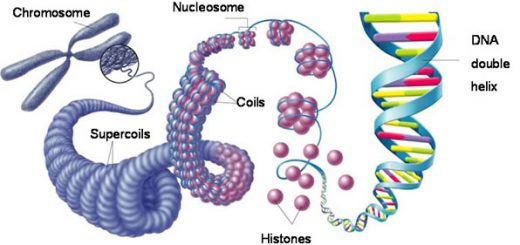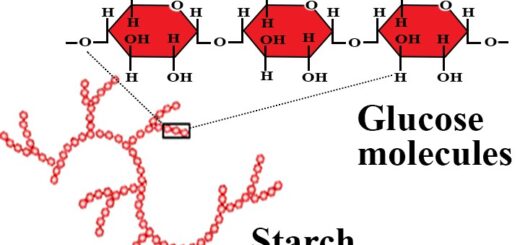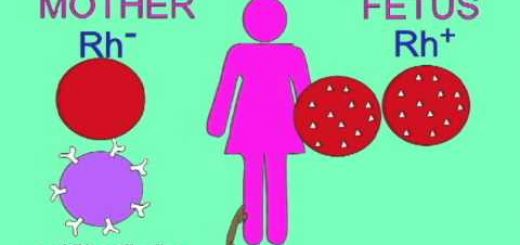Kinds of mutation according to its inheritance, its importance, position & origin of mutation
Mutation is a sudden change in the nature of the hereditary factors that control certain traits, which leads to a change of these traits in the living organism, Causes of mutation are due to changes in the structure of genes, changes in the environmental effects, changes in the number of chromosomes and Segregation and recombination of genes.
Mutation
Not all the cases of segregation and recombination of genes (changing in the chromosome structure) are considered as a mutation, Example: Segregation of genes during meiosis and recombination in crossing process (changing in the chromosome structure) is not considered as a mutation.
Kinds of mutation
First: According to its inheritance
- The true mutation is transferred through different generations.
- False mutation is not transferred through different generations.
Second: According to its importance
Non-desirable mutations represent most of the mutations, such as Deformations in man, Sterility in plants that causing a deficiency in the crop yield of these plants, Desirable mutations are rare mutations, So, man tries by all the possible scientific methods to induce them artificially.
Examples:
- American farmer discovered in his sheep one with short curved legs, He considered it as a desired trait, as it couldn’t climb over the fences and damage the cultivated plants, so, the farmer took care of breeding these mutant sheep until it gave rise to a new strain known as “Ancon”.
- Mutations that lead to an increase in crops yield.
Third: According to the type of mutation
Gene mutation
Mutation occurs due to the chemical changes in the gene structure (in the arrangement of the nitrogenous bases of DNA molecule) that leads to the production of different protein which would, in turn, develop a new trait.
The change in the chemical structure of the gene is often accompanied by a change from a dominant gene to the recessive gene and the opposite may occur in some rare cases.
Chromosomal mutation
The mutation occurs due to a change in the number or structure of chromosomes.
Change in the number of chromosomes (after meiotic division)
Increase in the number of chromosomes: as in the case of Klinefelter syndrome (44 + XXY), the cells contain one extra chromosome (X), Decrease in the number of chromosomes: as in the case of Turner syndrome (44 + X), the cells lack a chromosome (X).
Duplication of the number of chromosomes: Its causes are non-separation of the chromatids after the centromere division, The failure of membrane formation between the two daughter cells, Its commonness and effect:
In plants: it is more common, where a large proportion of known plants have polyploidy (3n, 4n, 6n, 8n, up to 16n) when the chromosomes are duplicated during the gamete formation and this results in the production of the individual with new characters.
Because each gene is represented by many copies, thus its effect becomes more pronounced, so, the plant becomes taller and consequently its organs become bigger, especially the flowers and fruits, Nowadays, there are many tetraploid (4n) crops and fruits such as cotton, wheat, apples, grapes, pears, strawberries and many others.
In animals: It is less common, because sex determination in animals demands a delicated balance between the numbers of autosomes and sex chromosomes, Thus, polyploidy in animals is restricted to some hermaphrodite snails and worms, where sex determination problem doesn’t exist.
Triploidy in man is found to be lethal and causes miscarriage, However polyploidy may occur in some liver and pancreas cells in man.
Change in the structure of chromosome
It occurs due to a change in the arrangement of genes of the same chromosome, because of:
- The separation of a piece from a chromosome during the cell division, rotates around itself 180° and rejoins to the same chromosome again, but in an inverted position.
- The two non-homologous chromosomes exchange segments.
- A small piece of a chromosome may be lost or gained.
Fourth: According to the position of mutation
Gamete mutation occurs in the reproductive cells (gametes), The new traits will appear in the resultant embryo, It occurs in the living organisms that reproduce sexually.
Somatic mutation occurs in the somatic cells, It appears as sudden symptoms in the organ whose cells are mutated, More common in plants that reproduce vegetatively, where a new branch may grow from the normal plant carries new and different traits from the original plant, this branch may be cut off and propagated vegetatively if this trait is desirable.
Fifth: According to the origin of mutation
Spontaneous mutation
It originates by itself without any human interference and it is rare in all organisms, It plays an important role in the evolution of living organisms, Its causes are certain environmental factors, such as Ultraviolet rays, Cosmic rays, and Chemical compounds.
Induced mutation
Mutations are induced by man to produce desirable changes in the traits of specific organisms, Man uses some factors to induce mutation:
- Natural factors, such as Gamma rays, Ultraviolet rays and X-rays.
- Chemical factors, such as Mustard gas, Colchicine and Nitrous acid.
Such treatments cause atrophy and death of the growing tip cells of the plants, New tissues are regenerated underneath these dead cells, and these new tissues contain some polyploid cells, Most induced mutations produce undesirable traits, but man selects the useful ones from them.
From the examples of the desirable induced mutations:
- Induce mutations lead to the production of fruit trees with more sweet taste and seedless fruits.
- Induce mutations in microorganisms such as Penicillium which is capable of producing large quantities of antibiotics (such as penicillin).
Packaging of DNA, Genome, chromosomal proteins, DNA in Prokaryotes & Eukaryotes



